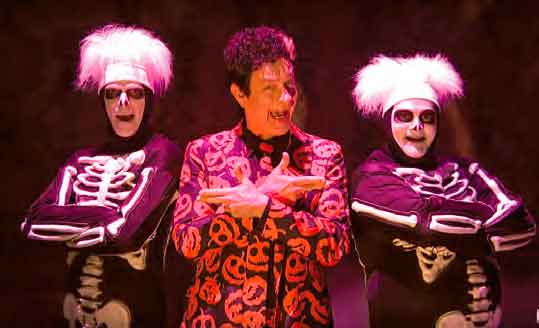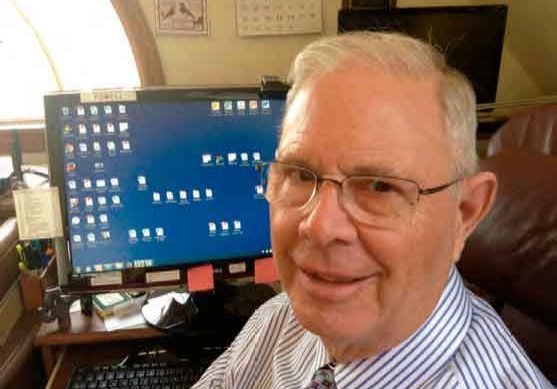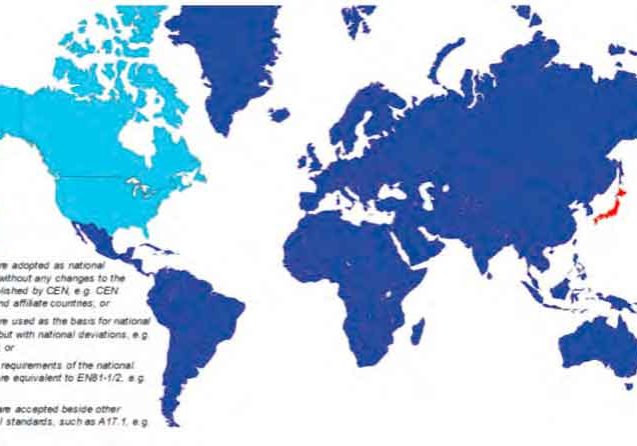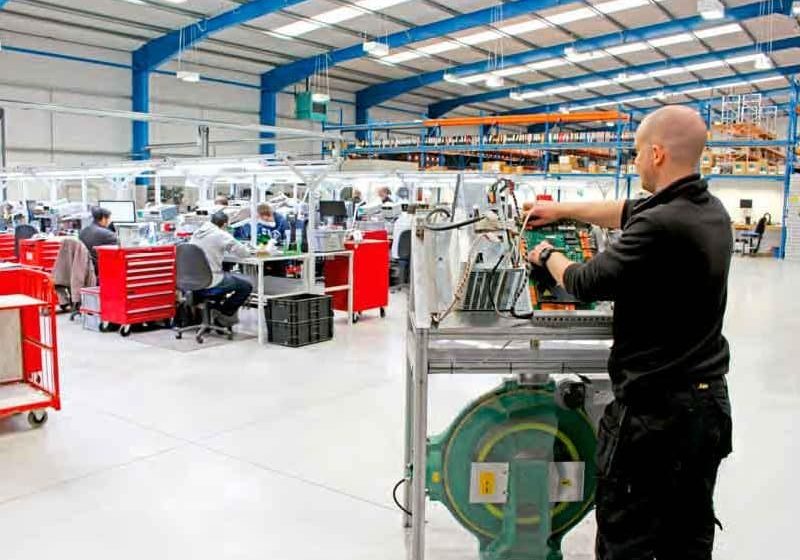The Best and Worst Elevator Art of 2018
Dec 1, 2018

Striking sculptures that reinterpret steel elevator cables from Taipei 101 distinguish an otherwise so-so year.
The Aerosmith pinball game was last year’s greatest work of elevator art (ELEVATOR WORLD, November 2017). It has two multiball formats (including an elevator multiball), the ability to bank multiballs and then play as many as six balls at a time, and a fully functioning elevator for the silver ball in the better of the two table models. It plays “Love in an Elevator” and other hits by the band.
Frankly, 2017 was a weak year. There was nothing like 2016’s “David S. Pumpkins” sketch on Saturday Night Live. There hasn’t been a really good year for elevator pop culture since 2003, with the eight elevator scenes in Sofia Coppola’s Lost in Translation and Elf’s Will Ferrell lighting up all the buttons in the Empire State Building elevator just like a Christmas tree. Nineteen-ninety-nine was even better: Colson Whitehead’s novel The Intuitionist, the debut album (Barefoot & Shitfaced) of the electro-pop band Elevator Suite and the widely circulated time-lapsed security footage showing Nicholas White stuck in an elevator in Rockefeller Center for 40 hr. Nineteen-thirty was a classic, with the black vaudeville hit “Elevator Papa, Switchboard Mama” by Butterbeans and Suzie, Robert Benchley’s essay “Elevator Weather” in The New Yorker, and the elevator doors of the Chrysler Building.
What did 2018 bring us? Nothing like the Chrysler doors, but still, not bad. Here are this year’s nominees:
Rebirth is Taiwanese artist Kang Mu-Xiang’s series of seven abstract sculptures made from the decommissioned elevator cables of the Taipei 101 building, which was the tallest building in the world from 2004 until completion of the Burj Khalifa in 2010. The bulbous, undulating shapes — the largest is 10 ft. tall and weighs 3,500 lb. — were installed this year in New York City (NYC) on a pedestrian mall running down Broadway in the middle of the Garment District, inspiring equal parts fascination and indifference from the passing crowds. In the spring, Peiju Chien-Pott, a principal dancer with the Martha Graham Dance Co., performed a series of dances in front of the sculptures, sometimes with fellow Graham dancers Abdiel Jacobsen and Ari Mayzick. Art begat more art.
Set It Up, a romantic comedy film broadcast on Netflix this year, is most notable for its homage to the long tradition of romcom elevators. It has six elevator scenes, including a long one in which the protagonists convince a building-maintenance worker to stall an office elevator so that their bosses, trapped in the elevator, will meet and fall in love. The maintenance worker is played by Tituss Burgess, who is best known for his role Titus Andromedon on the sitcom Unbreakable Kimmy Schmidt, which was created by Tina Fey, who also created the sitcom 30 Rock, which is the best elevator sitcom of all time. Although I appreciate the multiple jokes about Frederick Douglass on Kimmy, in four seasons, there are no elevator scenes of note. What’s up with that, Liz Lemon?
Next is an untitled painting by actor Jim Carrey of Sen. Jeff Flake being confronted by Ana Maria Archila and Maria Gallagher in an elevator on Capitol Hill. The confrontation, in which Archila and Gallagher urged Flake to force an investigation into allegations of sexual harassment and attempted rape against Supreme Court nominee Brett Kavanaugh, might itself be called political theater, and the CNN video of the event was widely viewed, but Carrey’s painting is the only element of this controversy that can really be considered art. He tweeted an image of the Flake portrait to his followers with the caption “He’s not a hero, but he (briefly) played one on TV.”
And, finally, is Richie De-Benham’s novel Counterweight Maneuver, a sci-fi thriller about a U.S. presidential aide who tries to take over the world with a space elevator. This is clearly the most exciting of the nominees, because it comes from one of our own — Debenham (the spelling of his name when he is not writing novels) has worked in the British elevator industry all his life and is a friend of EW, which featured a short piece on the novel in its September Last Glance. It is about time elevator people started creating their own art about elevators.
And so it is with heavy heart that I award Counterweight Maneuver the prize for worst elevator art of 2018. On the one hand, it is a really terrific book — fast paced, full of unexpected twists, teeming with intricately described and believable near-futuristic technology, graced with a touching love story and a nail-biting cliffhanger at the end. I urge all EW readers to go out and buy it, and make sure to read it, too.
But, like so much art about elevators, it is elevator-negative. De-Benham’s space elevator is a wholly sinister technology, a tool of dictatorship, oppression and mass murder. There is nothing in this novel that would make a reader love elevators.
What’s more, the bad guys are motivated, in part, by their desire to save Earth from “a fossil-fuel driven slide to economic and ecological suicide,” putting environmentalism on the side of evil. Whatever your take on the reality of global warming, green technology is a major selling point for the elevator industry today — both in the actual products and services sold, and in the general sense that more elevators mean greater urban density, fewer cars, less car exhaust and more efficiency in heating and cooling buildings. Environmentalism is good for the elevator industry and vice versa; Counterweight Maneuver puts this link under extremely harsh light.
This mixed review is also a plea of sorts. Maybe critics aren’t supposed to tell artists what to do, but please, Richie, give us some good elevators in the sequels. They deserve better press.
The award for best elevator art of 2018 goes to Rebirth. In addition to making elevator cables look beautiful, mysterious and new, Kang Mu-Xiang’s seven sculptures (named Twin Life, The Worried Whale, Ru-yi Life, Regeneration, Infinite Life, Ignore Me and Serenity) brought elevator art out into the public and foregrounded elevator-ness. They created an entirely new way to contemplate the height and engineering of the elevators in Taipei 101 and other skyscrapers. Their method of production is innovative. It took Kang a year and a half of experimenting to find his process of cleaning, bending and turning the cables. Their texture is delightful to touch or, as in Peiju Chien-Pott’s performances, writhe against.
Where Counterweight Maneuver shows environmentalism in a negative light, Rebirth is all about conservation. The elevator cables themselves are recycled material, and their source, Taipei 101, is still the tallest and largest green building in the world. (One wouldn’t expect the Burj Khalifa, built with petroleum money, to have the same commitment.) Kang Mu-Xiang has been making ecological art his entire career. He once spent a year on an uninhabited island making sculptures from driftwood and is sometimes referred to as an environmental rebirth artist. The sculptures that comprise Rebirth reflect that mission.
Where Counterweight Maneuver stokes fear of world government, Rebirth urges us to consider world peace. Kang has already exhibited some of these sculptures in Taipei and Karlsruhe, Germany, and his plan is to show them on five continents as part of a project called “One Steel Cable Connecting the World.” And if you don’t like the idea of world peace, consider Rebirth — which uses 480 km of steel wire, the same length as the island of Taiwan — as a way to stick it to the People’s Republic of China.
If you didn’t get a chance to see Kang’s sculptures in NYC, they will be on display in Washington, D.C., until the end of March 2019 at the UDC Student Center on Van Ness Street and Wisconsin Avenue, and at the Twin Oaks Estate. Sen. Flake, go check them out; your faith in elevators will be restored.
Get more of Elevator World. Sign up for our free e-newsletter.






